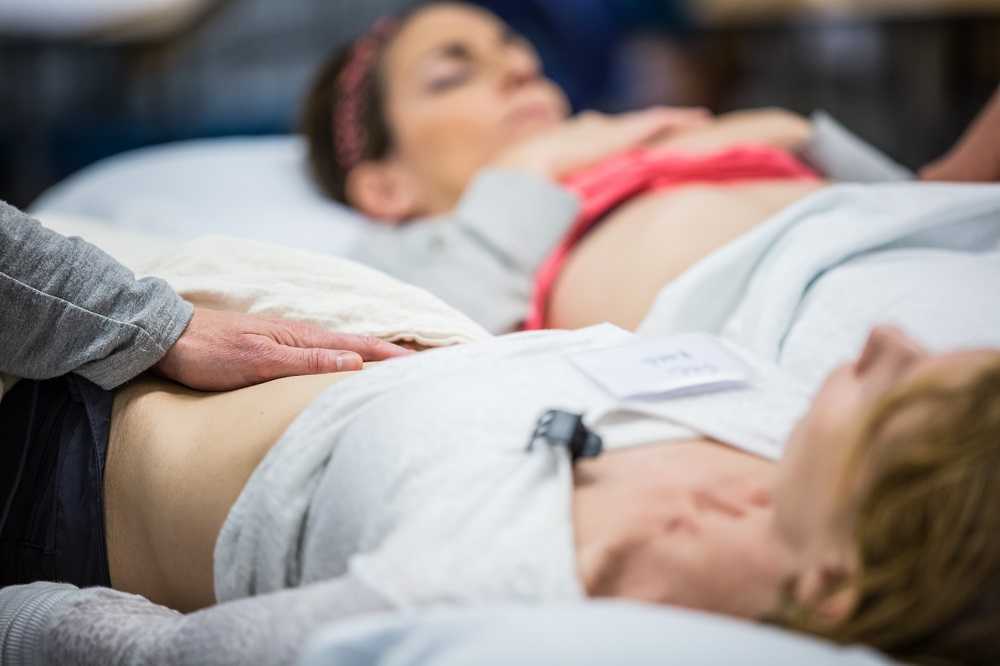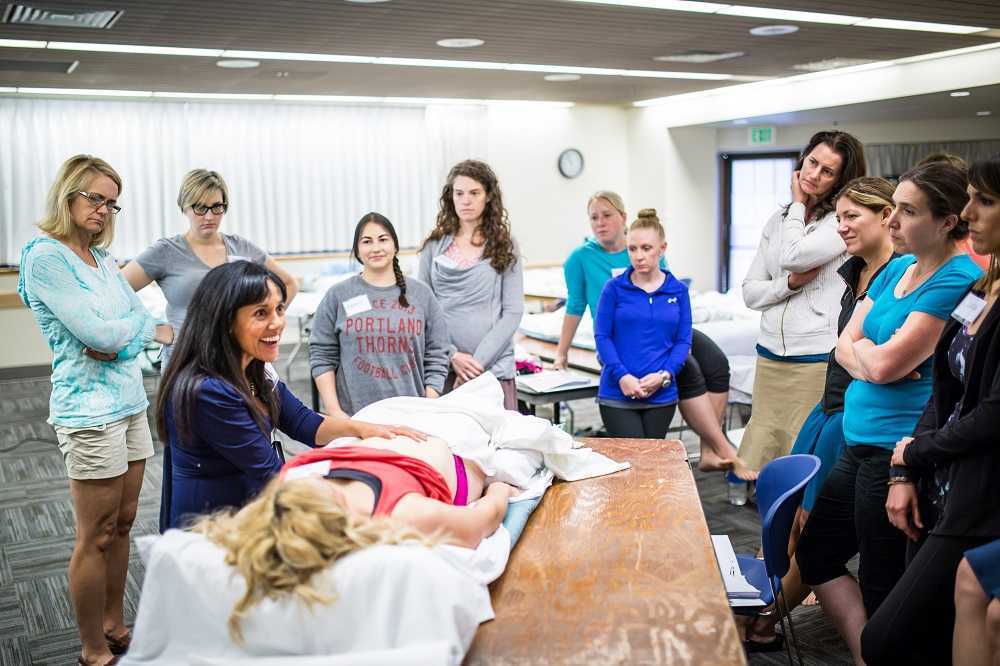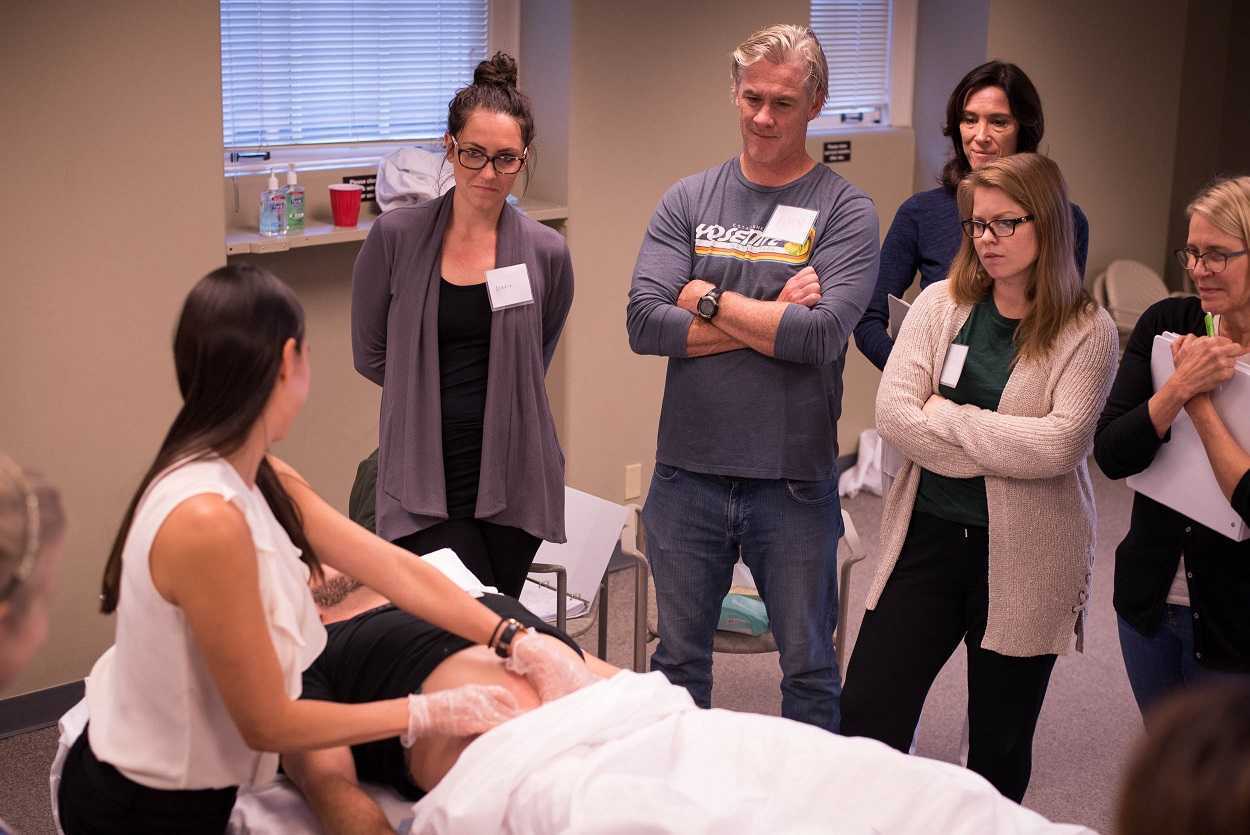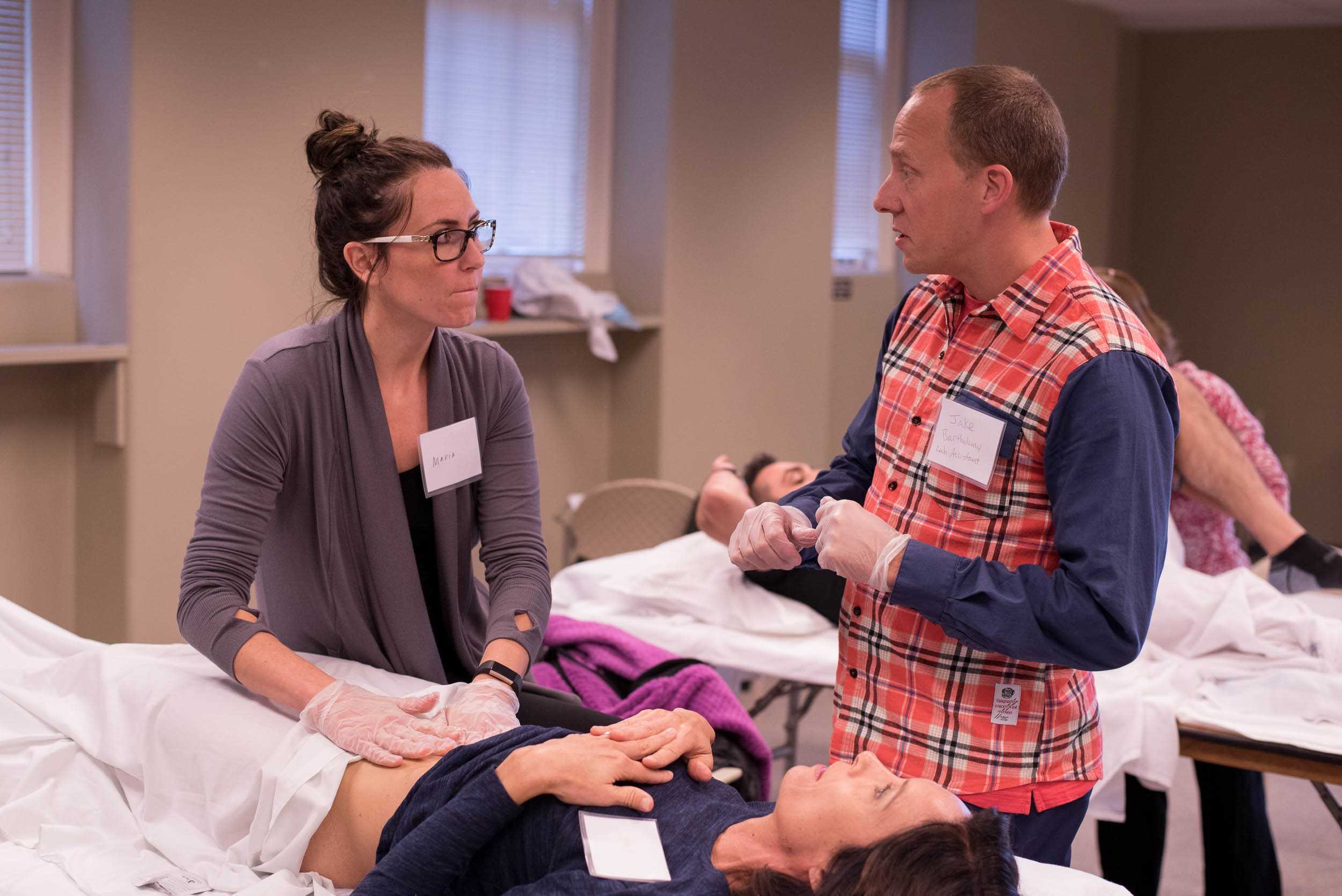This is a self-hosted satellite offering of our PF2A course. A satellite course means that the instructor is presently live on Zoom and that participants are gathering in various locations in order to participate and practice labs with one another. Self-hosted means that participants must register in pairs or small groups and practice on each other during lab time.
This continuing education course is comprised of 7 hours and 45 minutes of prerecorded lectures followed by 14 hours of live, interactive remote learning and is an intermediate-level seminar designed as a next step in completing the clinicians’ ability to more comprehensively evaluate and treat the female and male pelvic floor. The participant will have the opportunity to learn about two common bowel dysfunctions, fecal incontinence and constipation, and how the pelvic rehabilitation provider can play a crucial role in overcoming these issues that affect the quality of life so dramatically. In the US, the estimate of adult fecal incontinence is over 8% and greater than 15% in people over age 70. (Whitehead, 2010) According to the National Institutes of Health, constipation affects up to 15% of people, and is one of the most common gastrointestinal complaints that affects 42 million people. (Constipation, 2013) Pelvic rehabilitation providers are able to teach patients how to significantly improve quality of life through simple behavioral techniques and approaches that optimize abdominopelvic health.
Participants will learn how to evaluate the patient who presents with bowel dysfunction including fecal incontinence and constipation, and also with defecation disorders such as paroxysmal puborectalis, irritable bowel syndrome (IBS), and fecal urgency. Knowledge of pelvic anatomy expands into the gastrointestinal system with detailed instruction about the rectum and anal canal, anal sphincters, and with instruction in important physiologic principles such as the gastrocolic reflex, sampling response, and intrinsic defecation reflex. There are other conditions that can cause pain or bleeding such as hemorrhoids, fistulas, fissures, and proctalgia fugax; the clinician will learn how to apply skills of external and internal pelvic muscle assessment (via the anorectal canal) for these conditions.
Many pelvic rehabilitation providers attend this course to learn clinical skills for coccyx pain and for pudendal neuralgia, two conditions that are included in this continuing education course. As either condition can contribute to chronic pelvic pain, this course provides significant lab time so that participants will have the opportunity to practice any new skills. The course also introduces the participant to pelvic rehabilitation of the male patient with an emphasis on topics of male pelvic anatomy, urinary incontinence, prostatectomy, and male pelvic pain. The content in this course prepares the therapist to work with male pelvic conditions by reinforcing what is common to the care of both men and women, as well as teaching that which is unique for the male patient.Current medical evaluation (with tests such as defecography, manometry), medical management (for anorectal pain and for colorectal conditions), and evidence-informed clinical interventions will be instructed.
Please note, the Pelvic Floor series of courses typically fill up about 2-3 months before the scheduled course date. It is highly recommended that participants register well in advance to reserve their seats. If you need your employer to send a check for your registration payment, please click the Request Invoice button on the course event page to reserve your seat.
Special Considerations:
Please note, this is a full lab course that is done remotely. These guidelines represent how we feel you can best experience a remote course. If you feel you are unable to fulfill them then it is recommended that you not participate as a remote learner at this time.
- You will need to register with a PT partner. The feedback of your lab partner is highly valuable, therefore you will need to collaborate with another clinician, preferably someone in your clinic or health system that you are currently working with and who is under the same guidelines and current precautions as your state leadership mandates. All participants will need to register for the course.
- You will need to be able to access Zoom. The instructor will be teaching to all participants via this platform, including live lectures, offering real-time feedback, and answering your questions during lab sessions. Zoom is free to download. Each pair or small group will only need to log in with one device webcam (either laptop or tablet is fine) and will need to have working video and audio in order that the instructor can see you during lab time and hear your questions. Access to the meeting will be password protected and no genitalia will be displayed during the lab sessions.
- You will need the following supplies to participate fully:
- A treatment table or other solid surface on which a participant can lie during lab time. A hi-low table is ideal but not necessary, a yoga mat on the floor could work in a pinch.
- One pillow per participant
- One sheet per participant d
- Lubricant and wipes
- Each participant should bring their own gloves (one set for each lab).
Please treat this like any other live continuing education course. Test your ability to see and hear Zoom (audio and video) prior to the event. Come prepared, having completed the pre-course learning and with all props and supplies already gathered.
As this continuing education course includes extensive lab work, all course attendees should come prepared to participate as both clinician and patient. Rectal pelvic floor muscle examinations will be taught in labs. Past participants have found that wearing comfortable clothing that is easy for changing (such as skirts or athletic shorts) is very useful for labs. Due to temperature variations from clinic to clinic we would recommend wearing comfortable layers.
PLEASE NOTE: This course includes internal assessment and exam techniques, which will be practiced in partnered pairs in lab time. H&W strives to foster an environment that is safe and supportive. Survivors of past trauma should be aware that performing or experiencing internal exam may be triggering, and that many, regardless of their histories, feel strong emotions when practicing these techniques. In order to foster an environment that is non-triggering and safe for all participants, we recommend all participants consider the emotional impact they may experience during the course, and consider consulting a trauma counselor or therapist prior to attending. Read more about What to Expect During Courses with Internal Lab Work.
Audience:
This continuing education seminar is targeted to physical therapists, occupational therapists, physical therapist assistants, occupational therapist assistants, registered nurses, nurse midwives, and other rehabilitation professionals. Content is not intended for use outside the scope of the learner's license or regulation. Physical therapy continuing education courses should not be taken by individuals who are not licensed or otherwise regulated, except, as they are involved in a specific plan of care.
Prerequisites:
Pelvic Floor Level 1, through Herman & Wallace or Pelvic PT 1 through the APTA is required. Exceptions to this policy may be granted on a case-by-case basis, to inquire about such exceptions please contact us.
Required Readings:
1. The National Digestive Diseases Information Clearinghouse Handout on Fecal Incontinence
2. The National Institute of Diabetes and Digestive and Kidney Diseases Article on Constipation
3. The International Pelvic Pain Society Article on Pudendal Nerve Entrapment (PNE)
4. The European Urology Association'sGuidelines on Chronic Pelvic Pain
5. Principles of Biofeedback from Professor Tim Watson's website electrotherapy.org
6. Gray's Anatomy for Students - Available at a 25% Discount for Herman & Wallace registrants with promo code 70484. Registrants who already own a copy of this or a corresponding textbook are not required to purchase an additional one.
Additional Helpful Resources:
1. Male Pelvic Pain - go to malepelvicfloor.com
2. Many participants also find it helpful to review the anatomy of the pelvis and perineum
References
Constipation. (2013) National Institutes of Health. Retrieved January 22, 2014 from http://digestive.niddk.nih.gov/ddiseases/pubs/constipation
Whitehead, W. E., Borrud, L., Gode, P. S., Meikle, S., Mueller, E. R., Tuteja, A.,...Ye, W. (2009). Fecal incontinence in US adults: epidemiology and risk factors. Gastroenterology, (137)2, 512-517






